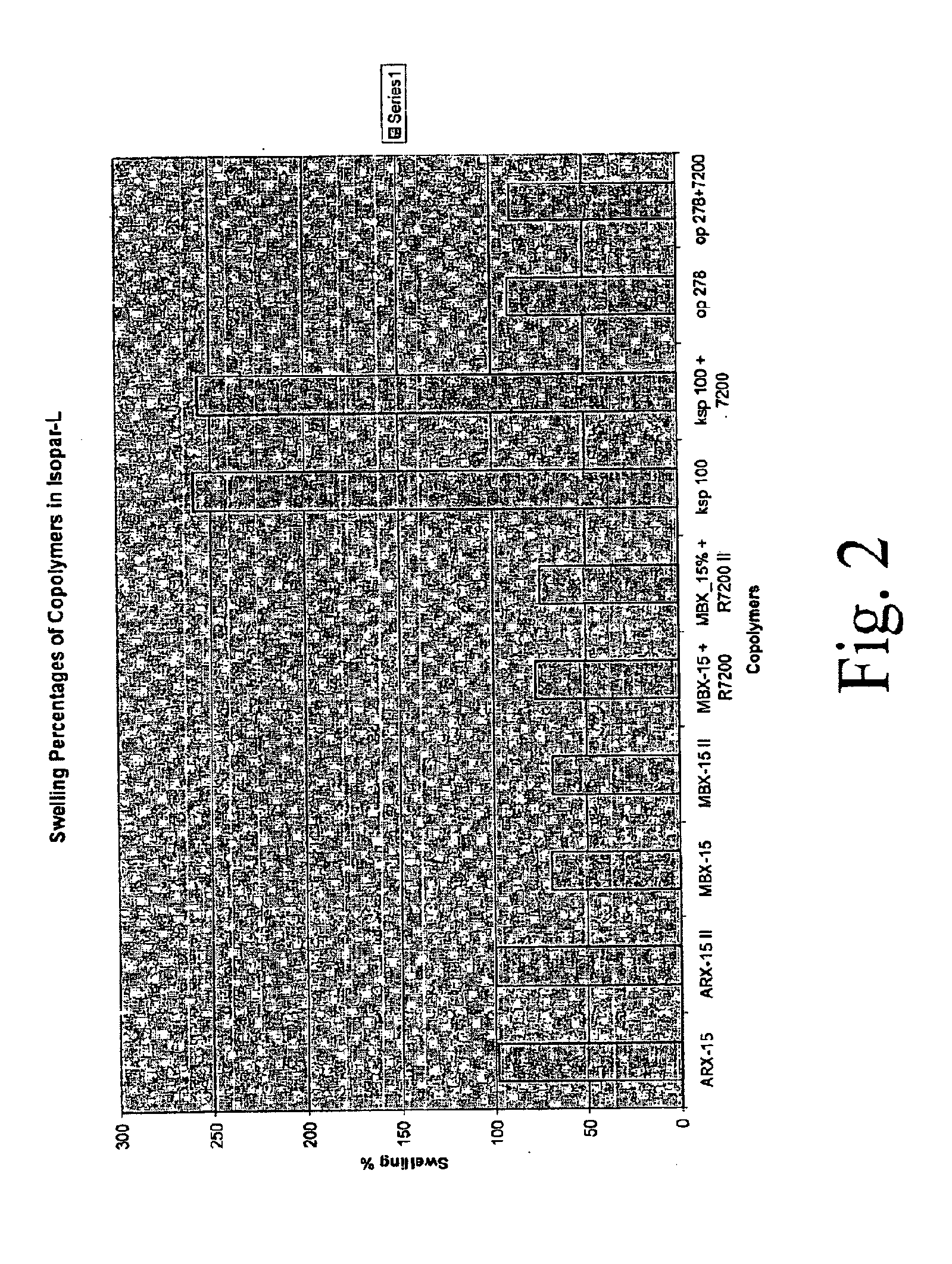Toner compositions for decreasing background development in liquid electrostatic printing and methods for making and using same
a technology composition, applied in the field of liquid electrostatic printing, can solve the problems of undercharging of toner particles in liquid developer, adverse effect of background on print quality, and particular noticeable loose pigment particle problem described above, and achieves the effects of reducing the amount of toner particles, and reducing the amount of toner
- Summary
- Abstract
- Description
- Claims
- Application Information
AI Technical Summary
Benefits of technology
Problems solved by technology
Method used
Image
Examples
Embodiment Construction
General
[0027]It has been demonstrated that background in conventional LEP printing is primarily caused by excess pigment and resin particles being deposited in undesired areas. As described above, these particles are not deposited in the desired location on the printed image primarily as a result of insufficient charging of these particles. The present inventors have determined that these free particles can be captured by the toner particles by supplying conventional liquid toner with an additional material that has a higher affinity for the pigment than the majority resin used and which also has an affinity for the majority resin. In an embodiment of the invention the additional material is a resin such as a cross-linked copolymer. Additionally, silica can be added to the toner in order to provide enhanced reduction of background during the printing process.
Preparation of Toner Material
[0028]In accordance with an embodiment of the invention, the inventive toner may be prepared from...
PUM
 Login to View More
Login to View More Abstract
Description
Claims
Application Information
 Login to View More
Login to View More - R&D
- Intellectual Property
- Life Sciences
- Materials
- Tech Scout
- Unparalleled Data Quality
- Higher Quality Content
- 60% Fewer Hallucinations
Browse by: Latest US Patents, China's latest patents, Technical Efficacy Thesaurus, Application Domain, Technology Topic, Popular Technical Reports.
© 2025 PatSnap. All rights reserved.Legal|Privacy policy|Modern Slavery Act Transparency Statement|Sitemap|About US| Contact US: help@patsnap.com


